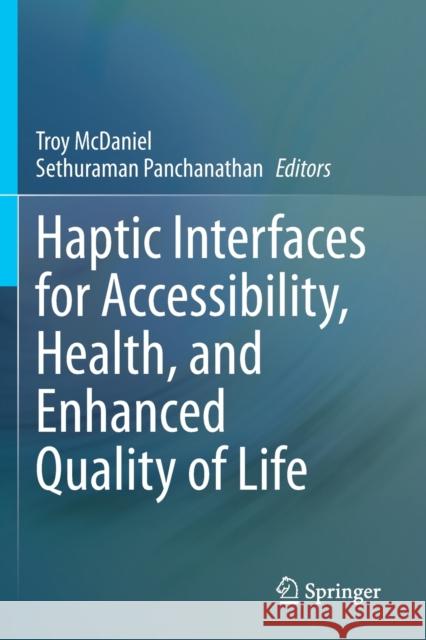Haptic Interfaces for Accessibility, Health, and Enhanced Quality of Life » książka



Haptic Interfaces for Accessibility, Health, and Enhanced Quality of Life
ISBN-13: 9783030342326 / Angielski / Miękka / 2020 / 297 str.
Haptic Interfaces for Accessibility, Health, and Enhanced Quality of Life
ISBN-13: 9783030342326 / Angielski / Miękka / 2020 / 297 str.
(netto: 345,02 VAT: 5%)
Najniższa cena z 30 dni: 346,96
ok. 22 dni roboczych.
Darmowa dostawa!
Part I: Haptics for Sensory Impairments.- Chapter 1: Enabling Learning Experiences for Visually Impaired Children by Interaction Design.- Chapter 2: Haptically-Assisted Interfaces for Persons with Visual Impairments.- Chapter 3: Maps as Ability Amplifiers: Using Graphical Tactile Displays to Enhance Spatial Skills in People Who Are Visually Impaired.- Chapter 4: Haptics for Sensory Substitution.- Part II: Haptics for Health and Wellbeing.- Chapter 5: Haptics in Rehabilitation, Exergames and Health.- Chapter 6: Therapeutic Haptics for Mental Health and Wellbeing.- Chapter 7: Applications of Haptics in Medicine.- Part III: Haptics for Physical Impairments.- Chapter 8: Assistive Soft Exoskeletons with Pneumatic Artificial Muscles.- Chapter 9: Haptics for Accessibility in Hardware for Rehabilitation.- Chapter 10: Intelligent Robotics and Immersive Displays for Enhancing Haptic Interaction in Physical Rehabilitation Environments.
1997-2026 DolnySlask.com Agencja Internetowa
KrainaKsiazek.PL - Księgarnia Internetowa









